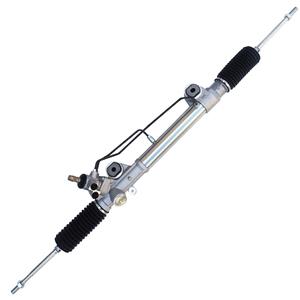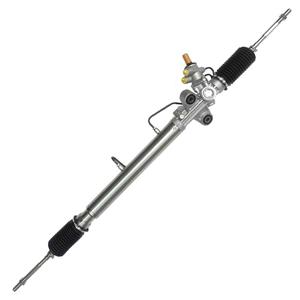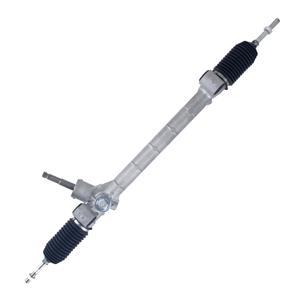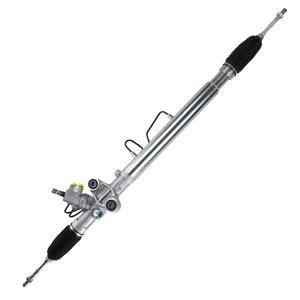How do I know if it's my steering column or the power steering rack that's at fault?
In daily driving, the health of the car's steering system is crucial, and it's directly related to the vehicle's safety and driving control experience. The key components of the steering system include the steering column and the power steering rack, which work together to accurately transmit the driver's steering wheel operation to the wheels. However, when a car has a steering problem, many car owners find it difficult to determine the source of the fault, whether it's the steering column or the power steering rack.
This article will discuss in detail how to distinguish between steering column and power steering rack faults, helping car owners to better determine the fault point when steering problems occur, avoid blind repairs, and ensure that potential safety hazards are resolved in a timely manner.
What are steering columns and power steering racks? Before determining the fault, you first need to understand the basic functions of the steering column and power steering rack and their role in the car's steering system.
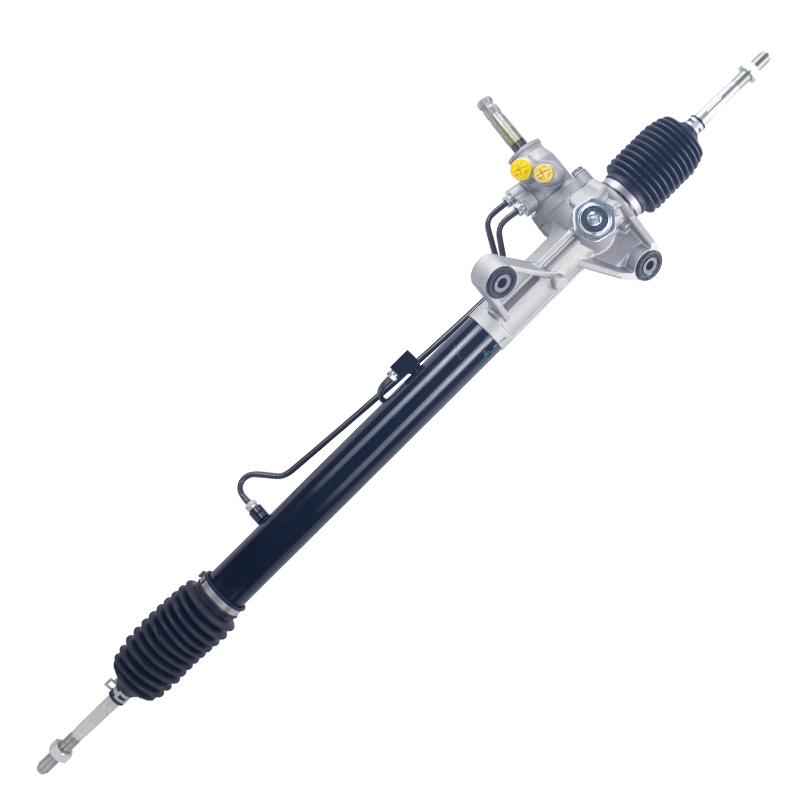
What is the role of the steering column?
The steering column is a key component that connects the steering wheel to the power steering rack. It transmits the force of the driver turning the steering wheel to the power steering rack, allowing the front wheels of the vehicle to turn as the driver intends. The steering column not only plays the role of force transmission, but also has the functions of buffering and supporting. Some steering columns even contain safety mechanisms that can prevent excessive displacement of the steering wheel and protect the driver in the event of a collision.
The steering column consists of multiple components, usually including steering shafts, universal joints, bearings and support frames. It is directly connected to one end of the steering wheel, and the other end is connected to the power steering rack through a universal joint to ensure that the steering system can operate smoothly and unimpeded.
What is the function of the power steering rack?
The power steering rack (or rack steering gear) is a device that converts the rotational motion transmitted by the steering column into linear motion. It transmits force to the wheels through a pull rod, thereby changing the direction of the vehicle. The structure of the power steering rack is similar to a combination of a gear and a rack. It is usually installed near the front axle of the vehicle and connected to the steering knuckles of the left and right wheels.
The steering rack has a power-assisted version (hydraulic or electric) and a non-power-assisted version. Most modern vehicles are equipped with a power steering system that relies on hydraulic or electric assistance to reduce the driver's steering force, making the vehicle easier to operate.
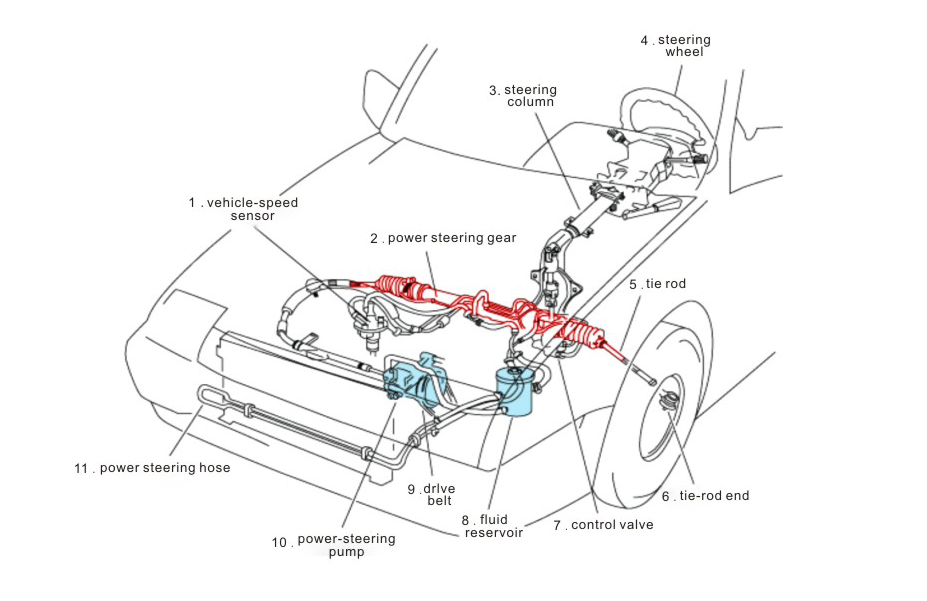
What are the fault manifestations of the steering column and power steering rack?
In order to accurately determine whether the fault comes from the steering column or the power steering rack, the owner needs to understand the fault manifestations of each and how to identify the fault through driving experience, visual inspection and sound.
What are the manifestations of steering column failure?
The main manifestations of steering column failure are poor force transmission, abnormal noise during rotation, and abnormal steering wheel feedback. Common fault manifestations include:
Clicking or abnormal noise when the steering wheel is turned
If you hear clicking, squeaking or metal friction sounds coming from near the steering column when turning the steering wheel, it may mean that the universal joint, bearing or other transmission parts of the steering column are worn or loose. The universal joint is a key component in the steering column, which ensures that the rotation of the steering wheel can be smoothly transmitted to the power steering rack. If the universal joint is damaged, the steering column may produce abnormal noise when transmitting force.
Steering wheel turns stiffly or sticks
When the steering wheel does not turn smoothly, or gets stuck at certain angles, it may indicate that the internal bearings or other parts of the steering column are damaged or worn. The bearings inside the steering column help the steering column rotate smoothly. Any wear or aging will cause the steering wheel to turn stiffly, affecting the vehicle's steering performance.
Steering wheel shakes or looseness
A noticeable shake or looseness in the steering wheel when turning usually indicates a problem with the installation or support of the steering column. Loose connection points or brackets of the steering column may cause the steering wheel to not stably contact other parts of the steering system, which in turn affects driving control. This loose feeling may gradually worsen over time, so it should be checked as soon as possible.
Steering wheel automatic return function failure
Under normal circumstances, the steering wheel should automatically return to the center position after turning. This is due to the combined effect of the vehicle's geometry and steering system. If the steering wheel does not return to the center position automatically, the steering column may have internal friction or jamming, which prevents normal force transmission.
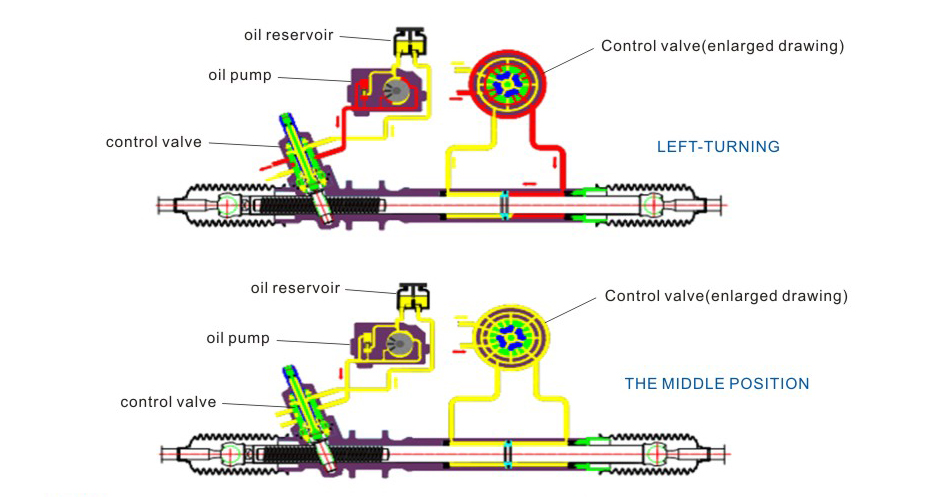
What does a power steering rack failure look like?
Compared with the steering column, a power steering rack failure will directly affect the vehicle's steering response and driving stability. The following are common signs of power steering rack failure:
Squeaks or hydraulic noises when steering
If you hear creaks, squeaks, or a hydraulic humming sound coming from the power steering rack when turning the steering wheel, it may be that the gears inside the power steering rack are worn, insufficiently lubricated, or there is a problem with the power steering system (hydraulic power steering). Failures in the hydraulic steering system are usually accompanied by hydraulic oil leakage or insufficient oil pressure, which causes increased steering system noise.
Steering wheel turning effort
When the power steering rack fails, the driver will notice that the steering wheel is more difficult to turn than usual. For vehicles equipped with power steering systems, failures in the steering power system will significantly increase the effort required to turn the steering wheel. This feeling of effort may indicate a problem with the power steering rack or the hydraulic pump or sensor of the power steering system.
Slow wheel response when steering
If the front wheels of the vehicle respond slowly or unevenly when turning the steering wheel, there may be a problem with the internal mechanical parts of the power steering rack. The gears inside the rack may be worn or damaged, causing the vehicle's steering response to become sluggish, which will have a direct impact on driving safety, especially when driving at high speeds or making emergency avoidance.
Abnormal vehicle steering or deviation
If the vehicle deviates when driving in a straight line, or the steering angle is inaccurate, this may be the result of internal damage to the power steering rack or wear of the steering tie rod. A loose or worn connection between the power steering rack and the tie rod will directly affect the vehicle's driving stability, making it difficult for the vehicle to maintain a straight line.
Power steering fluid leakage
If you find fluid leaking from the bottom of the vehicle, especially near the power steering rack, it may be a power steering fluid leak. This is usually caused by a damaged seal in the power steering rack. Hydraulic fluid leakage will reduce the power assistance of the steering system, making steering difficult and unstable.
How to distinguish between steering column and power steering rack failures?
The key to distinguishing between steering column and power steering rack failures is to observe the specific manifestation of the failure, as well as the sound, steering wheel feedback and vehicle reaction when the failure occurs. The following methods can help car owners better identify the source of the fault:
Judging by the sound of the fault
● The sound of steering column failure: If you hear a click, creak, or abnormal metal friction sound near the steering wheel (usually under the steering wheel or near the driver's knees), or there is an abnormal metal friction sound when the steering wheel is turned, then the problem is likely to be with the steering column. These sounds usually come from wear or damage to the universal joints, bearings, or other transmission parts inside the steering column.
● The sound of power steering rack failure: If the noise comes from the front of the vehicle, especially near the wheel or chassis, and is accompanied by hydraulic hum, gear jamming, or hydraulic oil leakage, the problem is most likely with the power steering rack or power steering system.
Judging by the feedback of the steering wheel
● Feedback of steering column failure: When the steering column fails, the feedback of the steering wheel may show stiffness or stagnation, especially when there is a jam or resistance when the steering wheel is turned, which usually occurs when turning at low speeds. If the steering wheel is obviously loose or shaky, the problem is also likely to be with the connecting parts or support devices of the steering column.
● Feedback of power steering rack failure: Failure of the power steering rack is often manifested as difficulty in turning the steering wheel, especially slow response or asymmetric steering during driving. Power steering system problems will also make the driver feel a lack of power when turning the steering wheel at low speed, and even require greater force to complete the turn.
Judging by the driving status of the vehicle
● The impact of steering column failure: If the problem is mainly concentrated on the rotation and transmission of the steering wheel, and the vehicle has no obvious deviation or abnormal reaction when driving in a straight line, the problem may be concentrated on the steering column. Especially when the steering wheel is not turning smoothly, other steering components may still work normally.
● The impact of power steering rack failure: Failure of the power steering rack usually affects the operation of the entire steering system, causing the vehicle to deviate, be unstable or have slow steering response during driving. If the vehicle shows obvious mechanical abnormalities when turning, such as oversteering or understeering, then the problem is likely to be with the power steering rack or tie rod.

How to further confirm the source of the fault?
After driving experience and initial judgment, if you are still unsure of the exact source of the fault, it is recommended to take the following methods for further confirmation:
Check the hydraulic fluid status
If the vehicle is equipped with a power steering system, you can check the status of the power steering fluid. If the fluid level is insufficient or fluid leakage is found, the problem may be with the power steering rack, which is closely related to the hydraulic system. Fluid leakage is often caused by the failure of the seal in the power steering rack.
Stethoscope tool
Using a professional stethoscope tool (or an on-board noise diagnostic tool), the source of the noise can be more accurately located. Such tools can help technicians distinguish whether the sound comes from the internal components of the steering column, or from the power steering rack or other chassis components.
Garage lift inspection
By lifting the vehicle, the technician can manually check each component of the steering system, including the steering column, power steering rack, and connectors. By shaking and observing the working status of these components, the technician can more clearly confirm the exact location of the fault.
